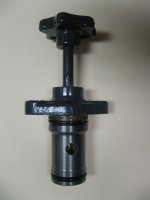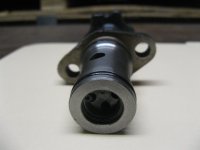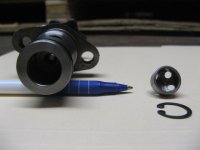OP
Harvest Moon
Gold Member
- Joined
- Nov 16, 2007
- Messages
- 357
- Tractor
- Kubota L3400 HST-F
Re: My quest for "Grand" 3 point performance from my "economy" tractor. The L3400
Good though ht1.
I'm starting to discount my theory that it's the spring. Not that the spring isn't important but that other components make the difference. With all this talk about flow restriction I'm questioning how a spring held in place by a retaining spring clip could possibly be stiff enough to provide enough shock absorption to influence fluid pushing at over 2000 psi.
The washer, slowing things down, seems to make more sense.
I don't understand enough about how these things work. How much spring resistance would it take to absorb sudden 2000 psi + pulses of hydraulic fluid?
Then again, having a spring in there, even fully compressed, would limit the full range of motion of the adjusting collar by a significant amount, which also may limit or slow the flow. The adjusting collar appears to be the "check" component of the valve.
Good though ht1.
I'm starting to discount my theory that it's the spring. Not that the spring isn't important but that other components make the difference. With all this talk about flow restriction I'm questioning how a spring held in place by a retaining spring clip could possibly be stiff enough to provide enough shock absorption to influence fluid pushing at over 2000 psi.
The washer, slowing things down, seems to make more sense.
I don't understand enough about how these things work. How much spring resistance would it take to absorb sudden 2000 psi + pulses of hydraulic fluid?
Then again, having a spring in there, even fully compressed, would limit the full range of motion of the adjusting collar by a significant amount, which also may limit or slow the flow. The adjusting collar appears to be the "check" component of the valve.




